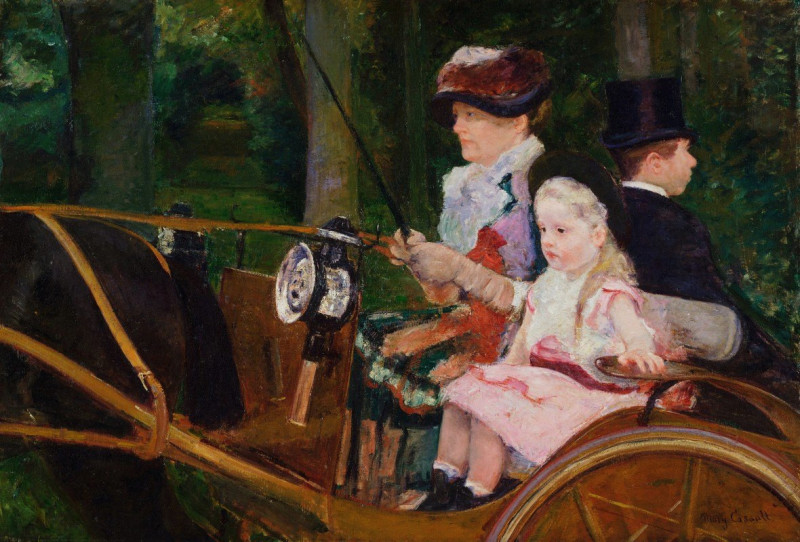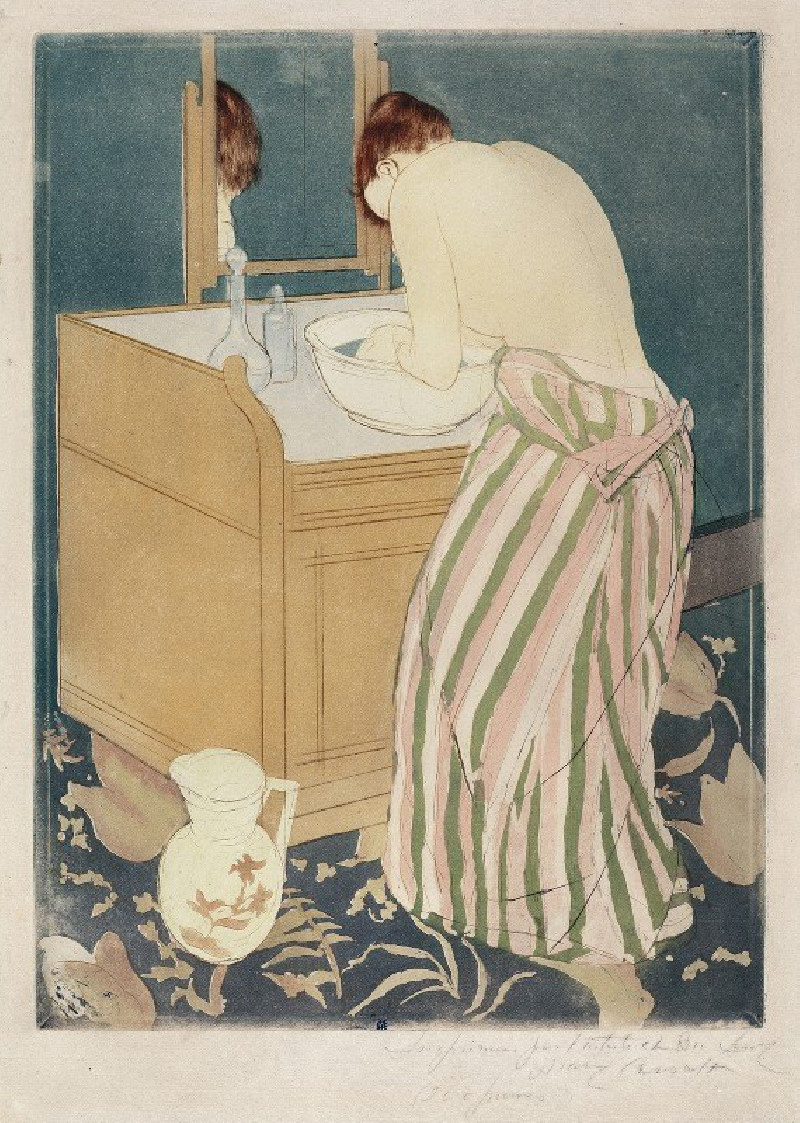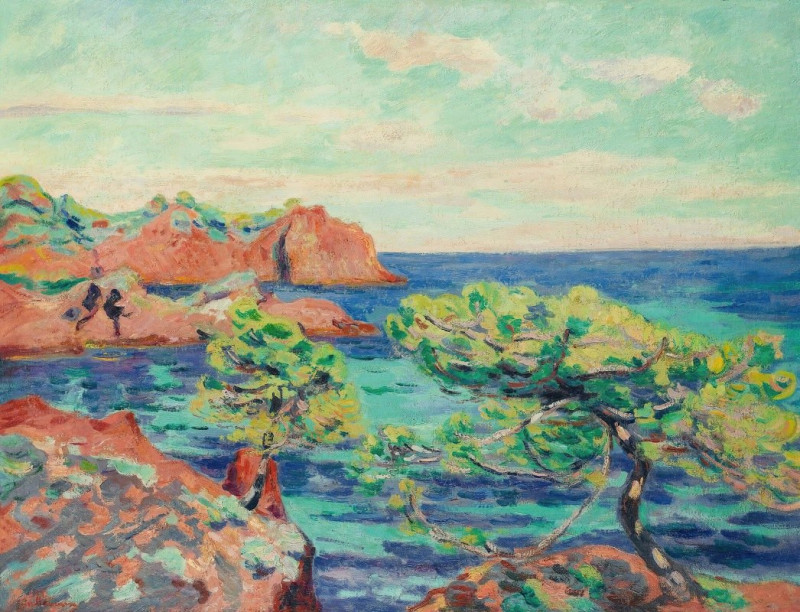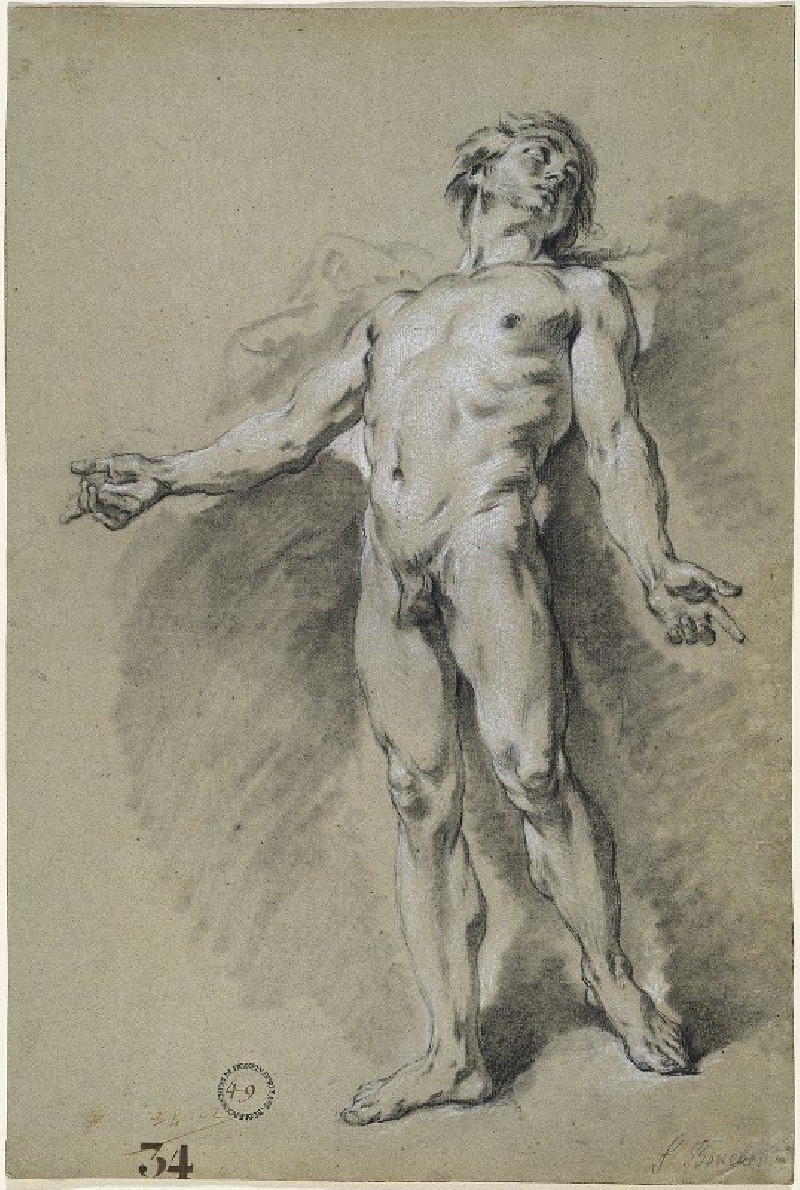The Letter (1890-1891)
Technique: Giclée quality print
Recommended by our customers
More about this artwork
The artwork entitled "The Letter" by Mary Cassatt, dated between 1890 and 1891, portrays a moment frozen in time, reflective of everyday life yet infused with deep emotional resonance. This drawing shows a woman engrossed in reading a letter, her expression one of thoughtful absorption. The viewer is drawn into her private world, pondering the contents of the letter that command such attention.Cassatt's skillful use of soft lines and subdued detailing in this sketch captures a sense of intimacy and quiet solitude. The scene is set in a simple interior, suggested by only a few lines indicating architectural elements, which focuses our attention fully on the central figure and her emotional state. Her posture, with the letter held closely, almost as if inhaling the words, lends a tactile quality to the scene, placing emphasis on the personal and tactile connection one has with handwritten correspondence.Mary Cassatt, an American artist whose life and work were primarily based in France, was celebrated for her perceptive depictions of women and children in their everyday environments. "The Letter" stands as a testament to her mastery in depicting the nuanced lives of women, with a depth that goes beyond the immediate visual appeal, inviting the viewer to reflect on the unseen stories carried through such personal artifacts as a letter.
Delivery
Returns
Mary Stevenson Cassatt was an American painter and printmaker. She was born in Allegheny City, Pennsylvania (now part of Pittsburgh’s North Side), but lived much of her adult life in France where she befriended Edgar Degas and exhibited with the Impressionists. Cassatt often created images of the social and private lives of women, with particular emphasis on the intimate bonds between mothers and children.
She was described by Gustave Geffroy as one of "les trois grandes dames" (the three great ladies) of Impressionism alongside Marie Bracquemond and Berthe Morisot.In 1879, Diego Martelli compared her to Degas, as they both sought to depict movement, light, and design in the most modern sense.














































